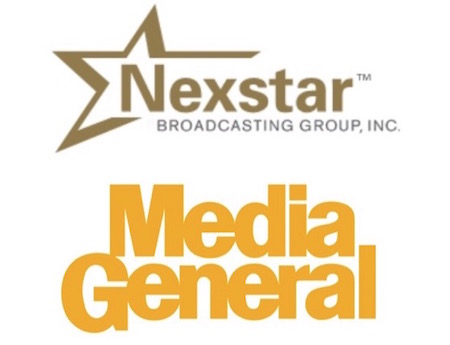Nexstar, Media General Mesh With Complementary Stations, Little Market Overlap

Related: Timeline of Nexstar's Growth in Acquisitions
Nexstar Broadcasting Group announced Wednesday it had agreed to acquire Media General, ending four months of maneuvering, negotiations, impasses, speculation, questions, counteroffers and overall intrigue.
There are only a few differences from Wednesday’s deal and the one announced in early January when the two parties said they had come to terms. Those terms have not changed since, according to Marci Ryvicker’s Wells Fargo report. This is an official, binding agreement and expected to close late third quarter or early fourth quarter. Meredith Corp., which was initially set to merge with Media General before Nexstar swooped in with an unsolicited bid, agreed to end its agreement with Media General for a $60 million breakup fee and the chance to negotiate to buy certain Media General broadcast and digital assets. Additionally, Nexstar has obtained $4.7 billion of committed transaction financing from banks.
Related: Four Months Later, Seemingly Inevitable Nexstar-Media General Marriage Closer to Complete
The new Nexstar Media Group’s 171 full power broadcast stations will be the most of any television group in the nation. Its 100 markets will likewise be more than any other TV group, while its combined reach of 39% of U.S. TV households will be the second most of any major TV group. It will also be the largest affiliate group of CBS.
In addition to the straight money matters and the amount and reach of stations, Nexstar sees the merger as a way to improve retransmission consent renegotiations and strategically position Nexstar Media Group for political advertising in significant markets.
There is not much market overlap between Nexstar and Media General stations, said Perry Sook, Nexstar chairman, president and CEO. He said that the two companies are a complementary fit.
The smarter way to stay on top of broadcasting and cable industry. Sign up below
“As we have gone through diligence and having conversations with (Media General president and CEO Vince Sadusky), we believe by and large that the Media General stations are run a lot like the Nexstar stations: the focus on local content, the focus on local revenue development and an eye toward cost,” Sook said. “We think the companies share a lot more similarities than they do differences.”
The company will be staffing up, adding around 40 people to help manage the transition, Sook said, adding that they could come from the Media General corporate office or the open market.
“We want the best athletes no matter the jersey they’re wearing,” Sook said. “We have the org chart with the boxes, now we just have to start filling in some of the names.”
Both Nexstar and Media General have registered stations for the spectrum auction, Sook said, and they will need to decide their intentions—to sell, channel share, or move to a VHF frequency. “Really, there won’t be any disclosure about the auction until the auction is over,” he said.
